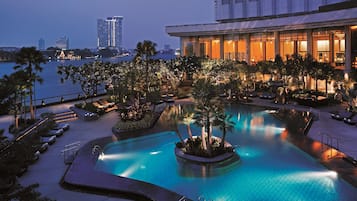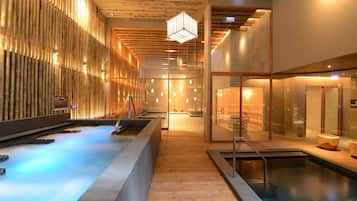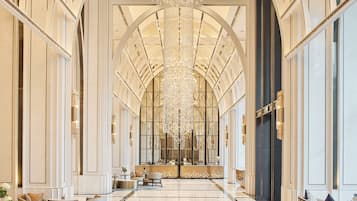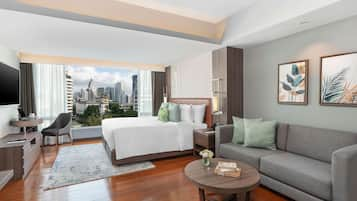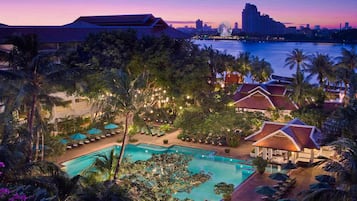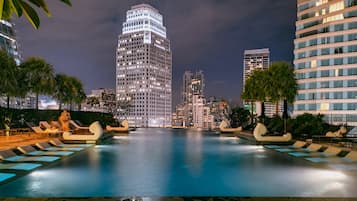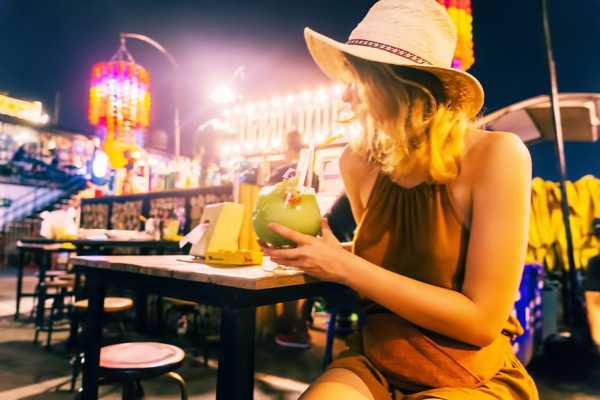During Songkran in Bangkok, you can see that having fun is a big part of Thai culture – having fun amid scorching heat is no exception. As the hottest month of the year, April sees the entire country go bananas in friendly water fights and street parties that last nearly a week.
Most office buildings, banks, as well as family-run shops and restaurants, shut down completely during Songkran, while big shopping malls usually remain open. Bangkok experiences a mass exodus, as at least half of its residents travel back to their home towns for family reunions. In their place are travellers, who fly into Bangkok particularly to enjoy one of the most colourful and festive times of the year.
Note: Songkran in Thailand is officially observed 3 days as a national holiday, and although the government may announce varying official dates, it’s usually between the 13th and 15th of April. Even so, celebrations often last an entire week!
Songkran in Bangkok - one of the highlights of Bangkok Events Calendar and The Ultimate Guide to Songkran (Read all about Bangkok here)
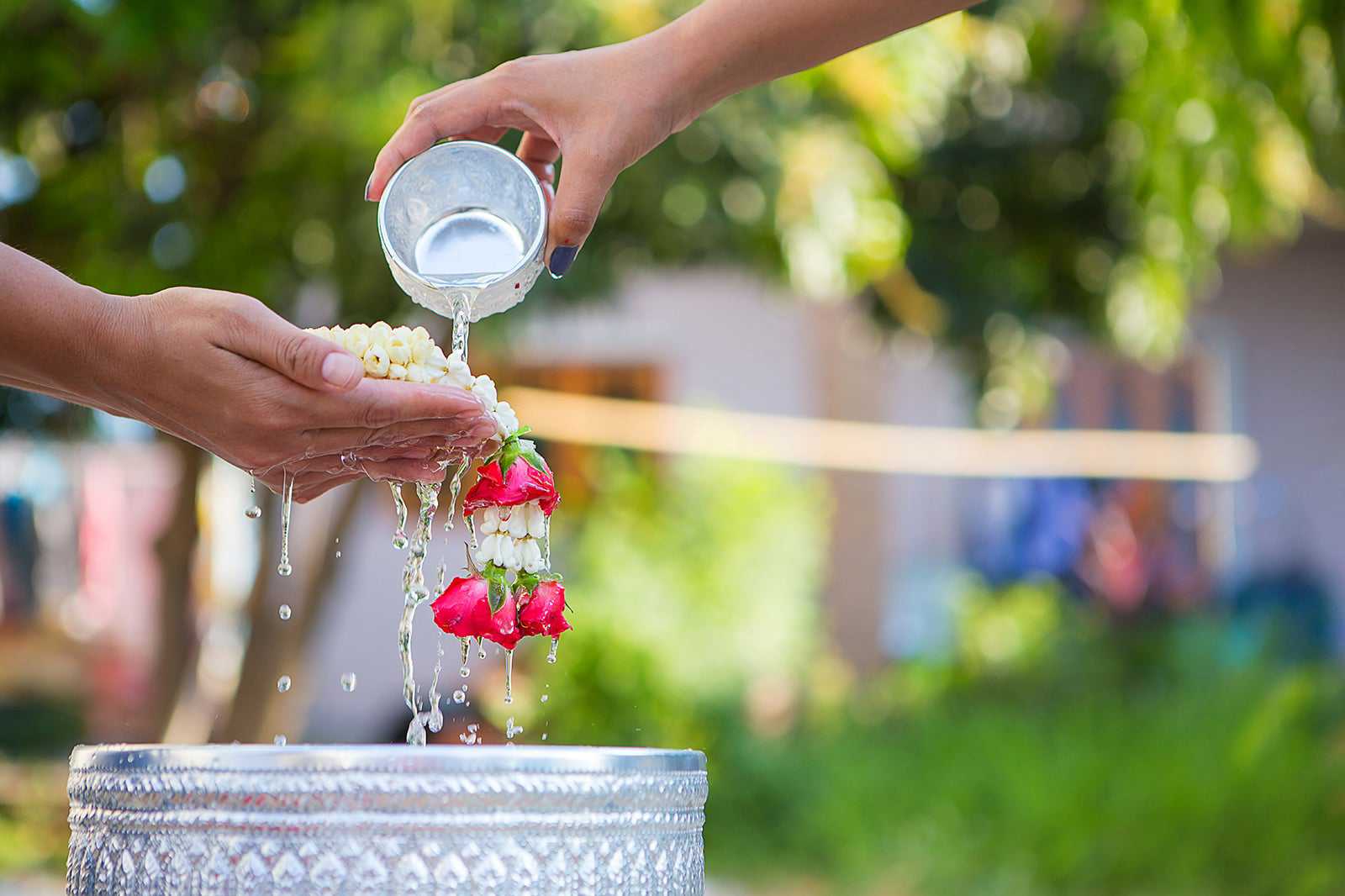
What is Songkran?
Songkran is the occasion for family reunions, temple visits and annual house cleaning. Many Thais observe the holidays by spending time with families and friends. Traditionally, Thais perform the Rod Nam Dum Hua ritual on the 1st day of Songkran, which is officially National Elderly Day. During the ritual, young people would pour fragrant water into the elders’ palms as a gesture of humility and ask for their blessings.
The 2nd day of Songkran is officially National Family Day. Families would wake up early and give alms to the monks, then ideally the rest of the day would be spent sharing quality family time together. An important religious ritual on Songkran is ‘Bathing the Buddha image’, in which devout Buddhists pour fragrant water over Buddha statues both at the temple and at home. More religious Thais would engage themselves in Buddhist ceremonies and merit-making activities throughout the holidays.
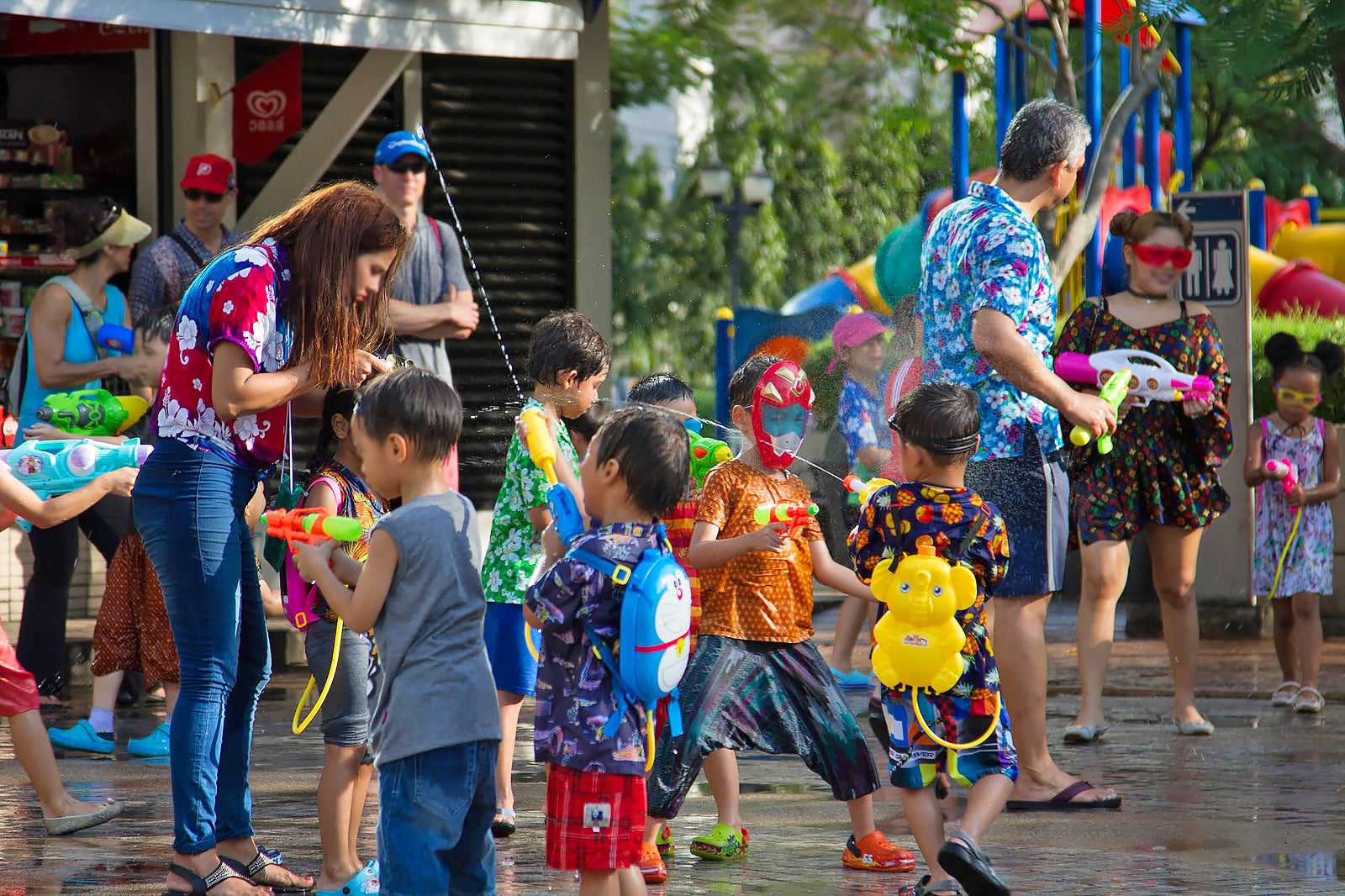
φωτογραφία από Johan Fantenberg (CC BY 2.0) τροποποιήθηκε
Symbolism of water
Fun-loving Thais don’t just throw water at each other for no good reason (besides having a kick out of seeing other people soaking wet). The real meaning behind the splashes is to symbolically wash off all misfortunes in the past year, thus welcoming the new year with a fresh start.
Traditionally, Thais would politely pour a bowl of water on members of the family, their close friends and neighbours. As Songkran has taken a more festive note, a bowl becomes a bucket, garden hose and water guns, and the spirit of holiday merriment is shared among all town residents and tourists.

φωτογραφία από Peter Gronemann (CC BY 2.0) τροποποιήθηκε
Making merit during Songkran
Making merit is an essential part of Songkran, and visiting 9 sacred temples during Songkran is considered one of the ultimate accumulators. You can try visiting temples in the Rattanakosin area like Wat Pho, Wat Phra Kaeo, Wat Suthat Thepphawararam, Wat Chana Songkhram, Wat Boworn, Wat Benchamabophit, Wat Rakhang Khositaram, Wat Arun and Wat Kanlaya.
When is Songkran?
Before Thailand adopted the international New Year’s Day in 1940, Songkran was calculated based on the solar calendar, which varied from one year to the next. Now Songkran in Bangkok is from 13th to 15th April every year. Depending on where you are in the country, the dates and period of festivities may vary.

φωτογραφία από James Antrobus (CC BY 2.0) τροποποιήθηκε
Silom
Silom is known to usually have the largest and wildest Songkran crowd in Bangkok. The entire 5-km length of this street – mostly known for Patpong – is packed on 2 levels with thousands of young Thais carrying anything that can spray water. The best part is that you can enjoy the party in relatively dry surroundings by staying on the BTS skywalk that runs above the street.
It relatively means that you should still carry any valuable items in a plastic bag. From up there, you can witness the full extent of the game: a huge colourful crowd of smiling young Thais slowly walking between 2 rows of stalls selling water guns, food, soft drinks and of course, lots of beer. The highlight is to spot the firetrucks ambushed at each intersection with their incredibly powerful water hoses. The crowd is actually delighted to be hosed down as the heat can reach 40°C in the sun.
Khao San Road
If you like the idea of getting soaked from head to toe in the middle of a wild party, be sure to drop by Khao San Road. Its entire length is turned into an almighty water fight, and once you're in, you're going to get absolutely wet! There are police checkpoints set up at both ends of the street to confiscate bottles, cans and the white powder that is usually rubbed on people's faces.
Don't worry though, you can buy all the alcohol you're likely to need inside one of the many bars that stay open throughout the festival, some with DJs set up inside plastic shelters and podiums for dancing. A word of advice: be careful on the tiled floors that become like ice rinks because it's a fairly common sight to see inebriated young tourists slipping, sliding and ending up with their whisky bucket all over the floor.
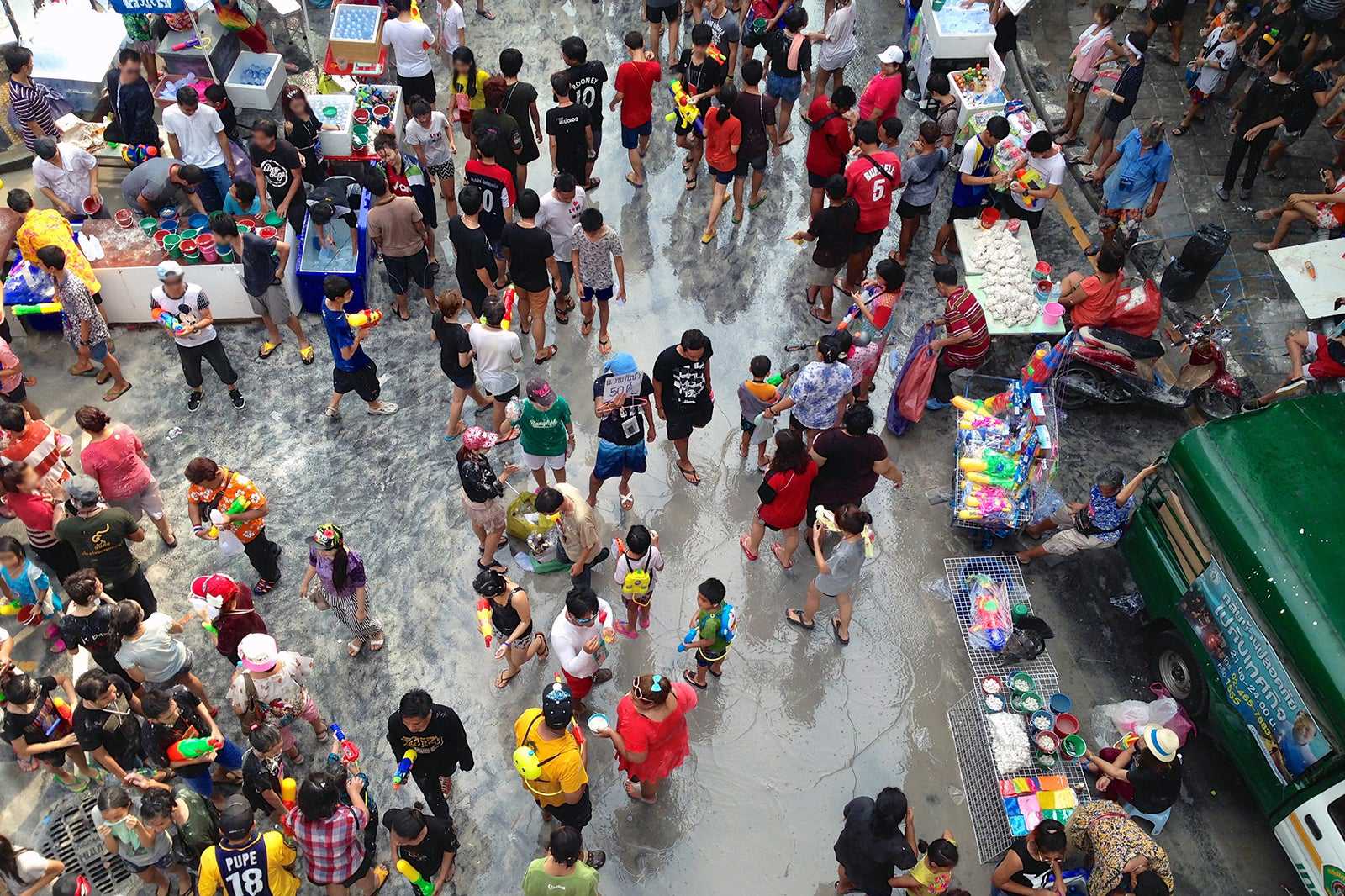
φωτογραφία από James Antrobus (CC BY 2.0) τροποποιήθηκε
Phra Pradaeng district
If you prefer a more traditional Songkran, head over to the Phra Pradaeng district where the Thai-Raman communities live out their Songkran traditions. Here, the celebrations take place about a week later than in central Bangkok and they’re filled with cultural significance.
You’ll not only get splashed here, but also enjoy an array of cultural activities, such as the Thai-Raman flag ceremony, the traditional saba game, Raman dances, boat races, a floral floats parade, and many more.
Sanam Luang
Sacred celebrations are held at Sanam Luang, opposite the Grand Palace. On the first day of Songkran here, the Buddha image 'Buddhasihing' is brought out from the National Museum and escorted along the streets for people to sprinkle water on.
The image is then located there for 3 days, so people who missed the procession can still pay their respects. Other merit-making customs in Bangkok include the building of sand stupas which are then decorated with colourful flags and flowers. You can see these key temples in the Rattanakosin area.
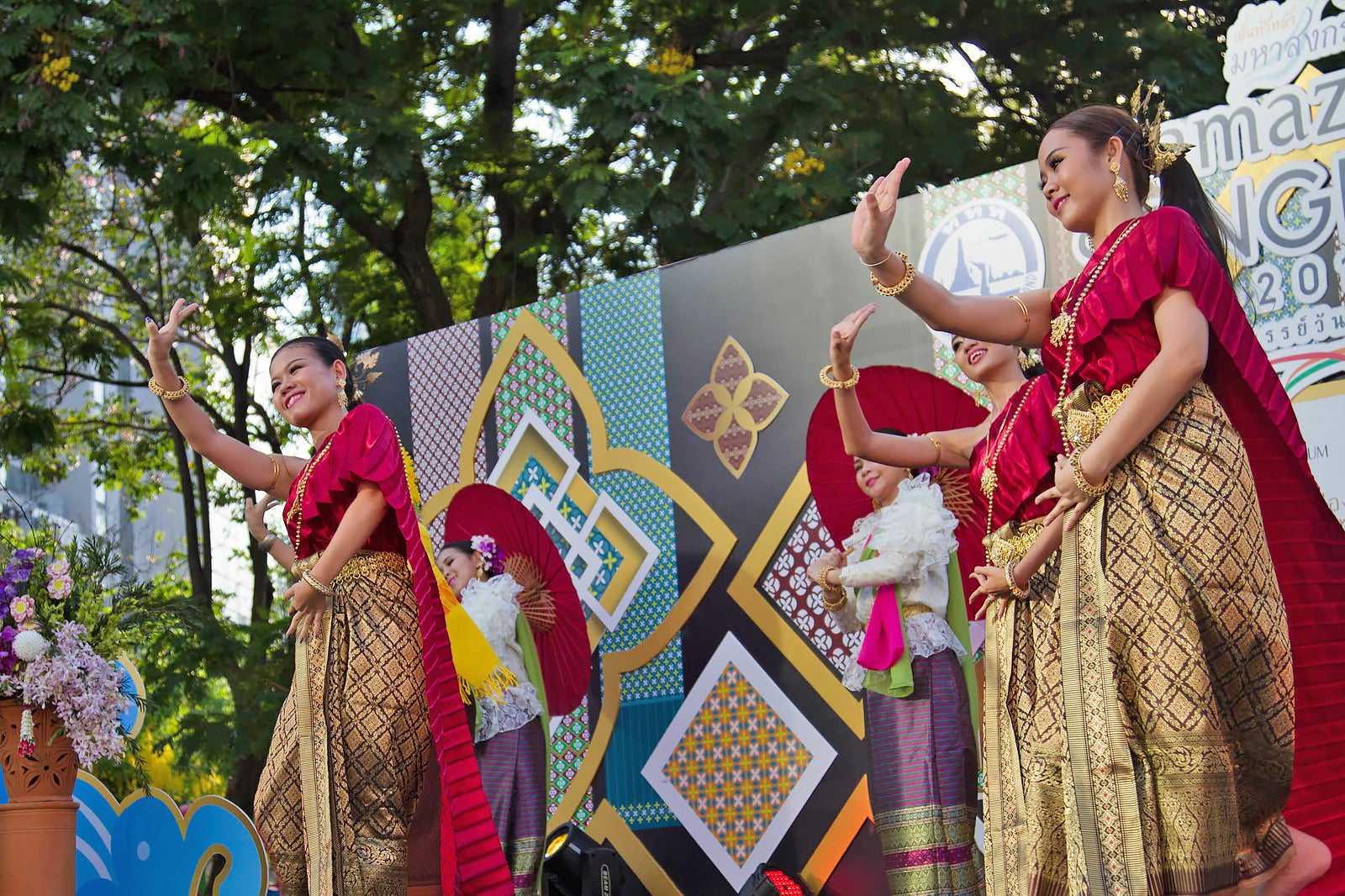
φωτογραφία από Johan Fantenberg (CC BY 2.0) τροποποιήθηκε
Beauty pageants and food fairs in the Wisutkasat area
A Miss Songkran Beauty contest is often held in the Wisutkasat area during Songkran, accompanied by merit-making, a parade and other fun activities. Food, as is always customary in Thailand, also features high on the agenda, with many mouthwatering seasonal treats available in hotels, restaurants, and from food vendors on every soi or street. Look out for special Songkran menus at some hotels and restaurants.
Do’s
- Give alms and make merit (or just witness the rituals if you are not a Buddhist)
- Use waterproof bags to protect your valuables
- Watch your belongings
- Use public transport if you're heading to one of the Songkran ‘hotspots’, as traffic will be paralysed
- Try wishing the locals a happy new year in Thai – “Sawasdee Pee Mai!”
- Smile and have fun
Don’ts
- Douse monks, babies or the elderly
- Drive when you've been drinking
- Throw water with ice or dirty water
- Throw water at motorcyclists (it can cause accidents)
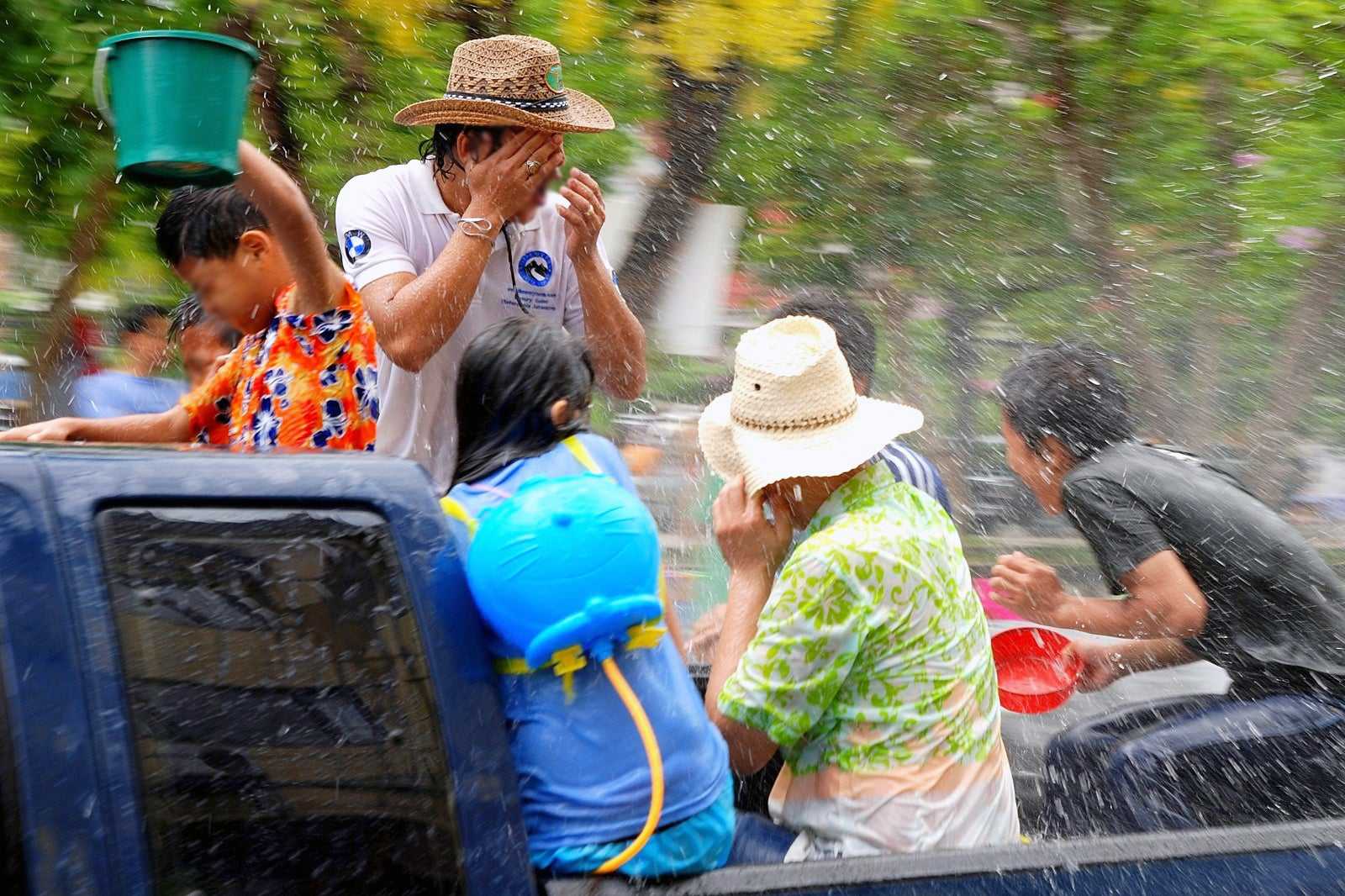
φωτογραφία από Takeaway (CC BY-SA 3.0) τροποποιήθηκε


